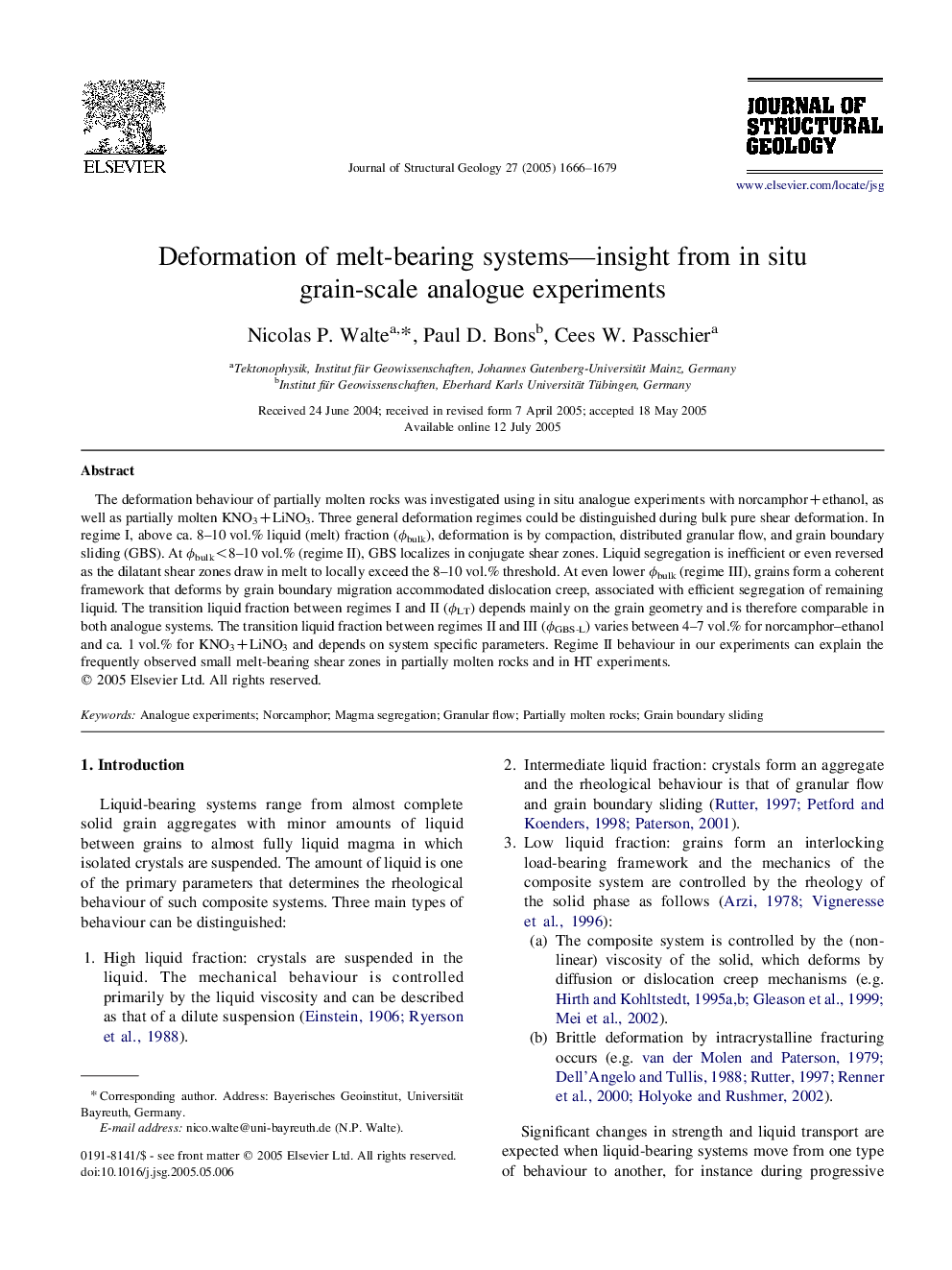| کد مقاله | کد نشریه | سال انتشار | مقاله انگلیسی | نسخه تمام متن |
|---|---|---|---|---|
| 9536183 | 1357091 | 2005 | 14 صفحه PDF | دانلود رایگان |
عنوان انگلیسی مقاله ISI
Deformation of melt-bearing systems-insight from in situ grain-scale analogue experiments
دانلود مقاله + سفارش ترجمه
دانلود مقاله ISI انگلیسی
رایگان برای ایرانیان
کلمات کلیدی
موضوعات مرتبط
مهندسی و علوم پایه
علوم زمین و سیارات
زمین شناسی
پیش نمایش صفحه اول مقاله

چکیده انگلیسی
The deformation behaviour of partially molten rocks was investigated using in situ analogue experiments with norcamphor+ethanol, as well as partially molten KNO3+LiNO3. Three general deformation regimes could be distinguished during bulk pure shear deformation. In regime I, above ca. 8-10Â vol.% liquid (melt) fraction (Ïbulk), deformation is by compaction, distributed granular flow, and grain boundary sliding (GBS). At Ïbulk<8-10Â vol.% (regime II), GBS localizes in conjugate shear zones. Liquid segregation is inefficient or even reversed as the dilatant shear zones draw in melt to locally exceed the 8-10Â vol.% threshold. At even lower Ïbulk (regime III), grains form a coherent framework that deforms by grain boundary migration accommodated dislocation creep, associated with efficient segregation of remaining liquid. The transition liquid fraction between regimes I and II (ÏLT) depends mainly on the grain geometry and is therefore comparable in both analogue systems. The transition liquid fraction between regimes II and III (ÏGBS-L) varies between 4-7Â vol.% for norcamphor-ethanol and ca. 1Â vol.% for KNO3+LiNO3 and depends on system specific parameters. Regime II behaviour in our experiments can explain the frequently observed small melt-bearing shear zones in partially molten rocks and in HT experiments.
ناشر
Database: Elsevier - ScienceDirect (ساینس دایرکت)
Journal: Journal of Structural Geology - Volume 27, Issue 9, September 2005, Pages 1666-1679
Journal: Journal of Structural Geology - Volume 27, Issue 9, September 2005, Pages 1666-1679
نویسندگان
Nicolas P. Walte, Paul D. Bons, Cees W. Passchier,